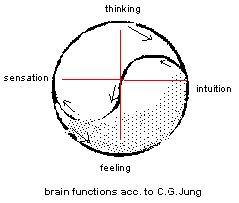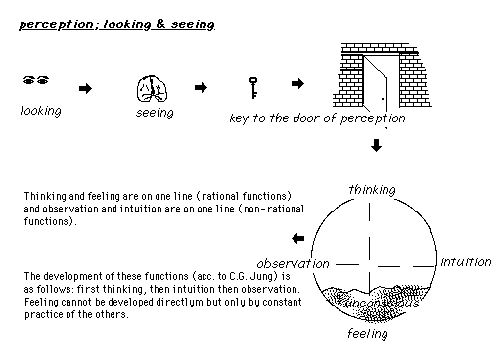
perception
I am what I think I am,
and -if I'm not careful - may become what others think I am.
Perception means the process by which we make sense to ourselves of our environments and language is the process by which we communicate with others about the things we perceive. For many individuals external reality remains to some extent a subjective phenomenon. Therefore the degree of objectivity we count on when we talk about external reality in terms of an individual is variable. To some extent objectivity is a relative term because what is objectively perceived is by definition to some extent subjectively conceived of.
That is why discussions are held about all kinds of subjects so that differences in view can be compared. Although more often than not discussions really center on confrontation without comparing all aspects. Very often people disagree on minor details whereas on the whole they do agree. Or they agree about the problem but not what to do about it. There is a story about the man who painted half his car black and the other half white so that if he was involved in an accident he could enjoy hearing the witnesses contradict each other. The most common source of any argument is that both sides are absolutely right but each is looking at a different part of the situation.
We very often do not look with our eyes but with our emotions. A particular situation calls forth certain emotions and then we cannot very well see. It is often very difficult to tear ourselves away from a particular part of situation which has drawn our attention. In meetings we often see that minor details get inordinately much attention, while the overall picture is hardly discussed. The comparison should tell us how the other side sees things. Creative thinking means working on one's way of looking. However, the change effected will differ from individual to individual. It will depend on how far one is able to effectively include all factors involved in perception. One's own outlook and way of thinking are essential, as they determine how we 'see' the facts. Proper identification followed by dis-identification are mandatory if the learned techniques are to be applied to the full.
Professor C.G. Jung distinguished two ways of perceiving reality: through observation (sensation) and intuition, and two ways of judging reality: thinking and feeling.
The two dimensions are often combined to identify different personality types. According to which functions are dominant, we can identify four ways of dealing with the world and of shaping one's reality:

ST- individuals tend to be empiricists who sense and think their way through life, making judgement and interpretation on the basis of "hard facts" and logical analysis.
SF- individuals also tend to pay a great deal of attention to data derived from the senses, but arrive at judgments in terms of what feels right" rather than in terms of analysis.
IT- individuals tend to work their way through life by thinking about the possibilities inherent in a situation. Their actions tend to be shaped by ideas and insight rather than facts.
IF- individuals tend to be guided by a combination of insight and feeling which pays much more attention to values than to facts.

When one style of action is dominant, the other styles occupy background roles. Clearly since each style present an alternative way of understanding the same situation, opportunities are lost in the imbalance.